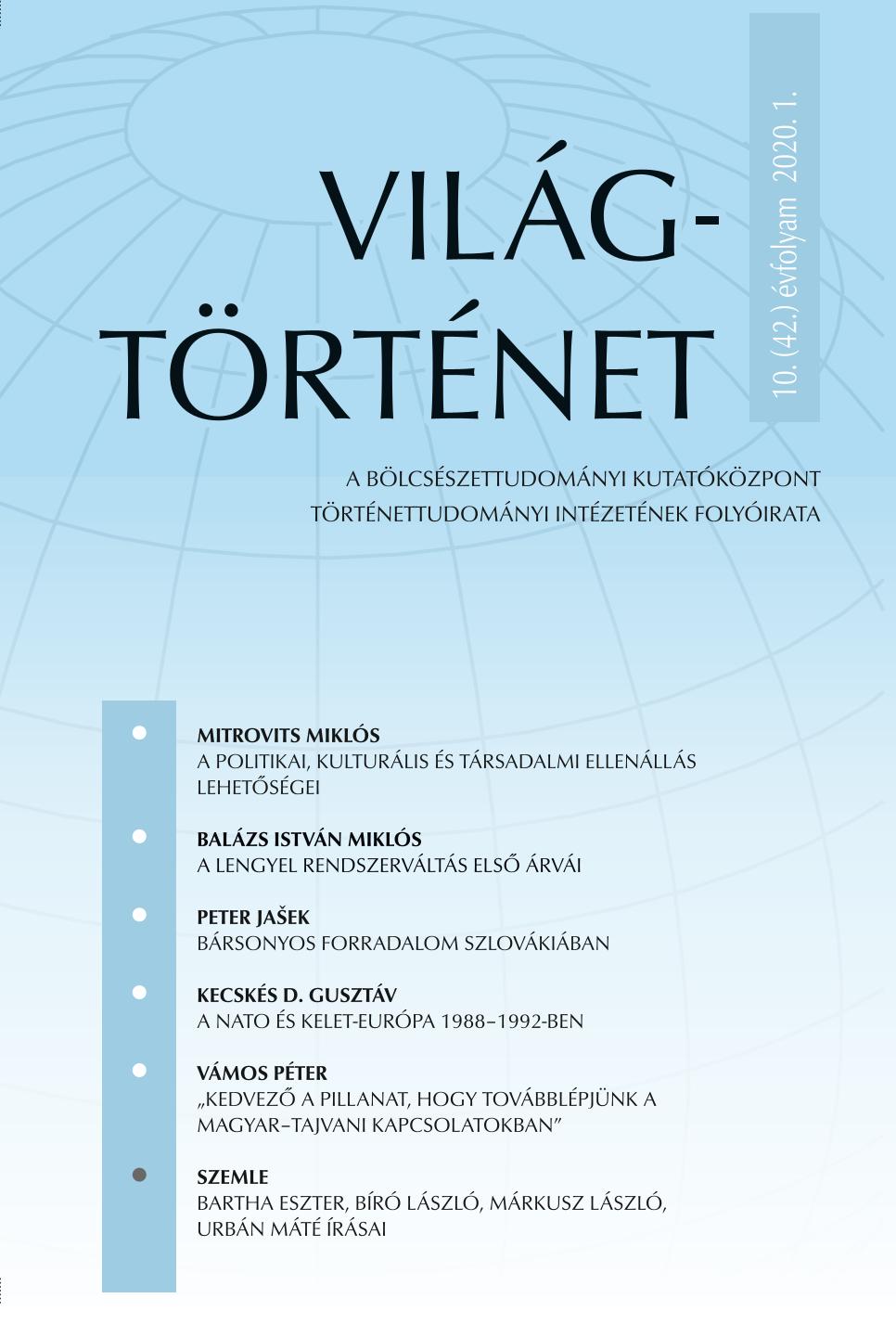A NATO és Kelet-Európa 1988‒1992-ben. Az Atlanti Paktum helyzete és tevékenysége: átalakulás és folytonosság
NATO and Eastern Europe, 1988–1992: Situation and Activities of NATO: Transformation and Continuity
Author(s): D. Gusztáv KecskésSubject(s): Post-Communist Transformation
Published by: Magyar Tudományos Akadémia Bölcsészettudományi Kutatóközpont Történettudományi Intézet
Summary/Abstract: Thirty years ago, decisions were taken that fundamentally determined the geopolitical situation of today’s Europe. NATO still exists and American troops continue to be stationed on our continent. The study, based on international and Hungarian literature, and documents already available in the NATO Archives, the French Foreign Ministry Archives and the National Archives of Hungary, illustrates how the 1989–1991 Eastern European regime change affected the North Atlantic Alliance, and thus the current security situation in Europe. Celebrating its 40th anniversary in 1989, the alliance faced many challenges. The turbulent transformation of Eastern Europe and Eastern–Western relations is particularly significant. Thus, the North Atlantic Alliance’s eastern security environment has changed radically. The rival military alliance, the Warsaw Pact, gradually eroded and then dissolved in July 1991. By the end of the year, the Soviet Union itself had disintegrated. However, NATO security experts have identified new threats as well as changes that are favourable to them. They feared the destabilization of an unmoved Eastern European region for decades: nationalism suppressed by the Soviet rule until then, social upheavals triggered mass movements, and sharp conflicts began to emerge between individual states in the region. As a first step in the transformation of the Alliance, the doctrine of the use of military force and military tools changed radically. Crisis prevention and crisis management have become NATO’s new mission. Opening up to Eastern Europe was also an important element of the transformation. Intensive networking has begun in the military and political spheres towards the region.
Journal: Világtörténet
- Issue Year: 2020
- Issue No: 1
- Page Range: 79-98
- Page Count: 20
- Language: Hungarian

